NO WATER? NO RADIATORS! NO WATER PUMP! NO PROBLEM WITH REV X MAX POWER
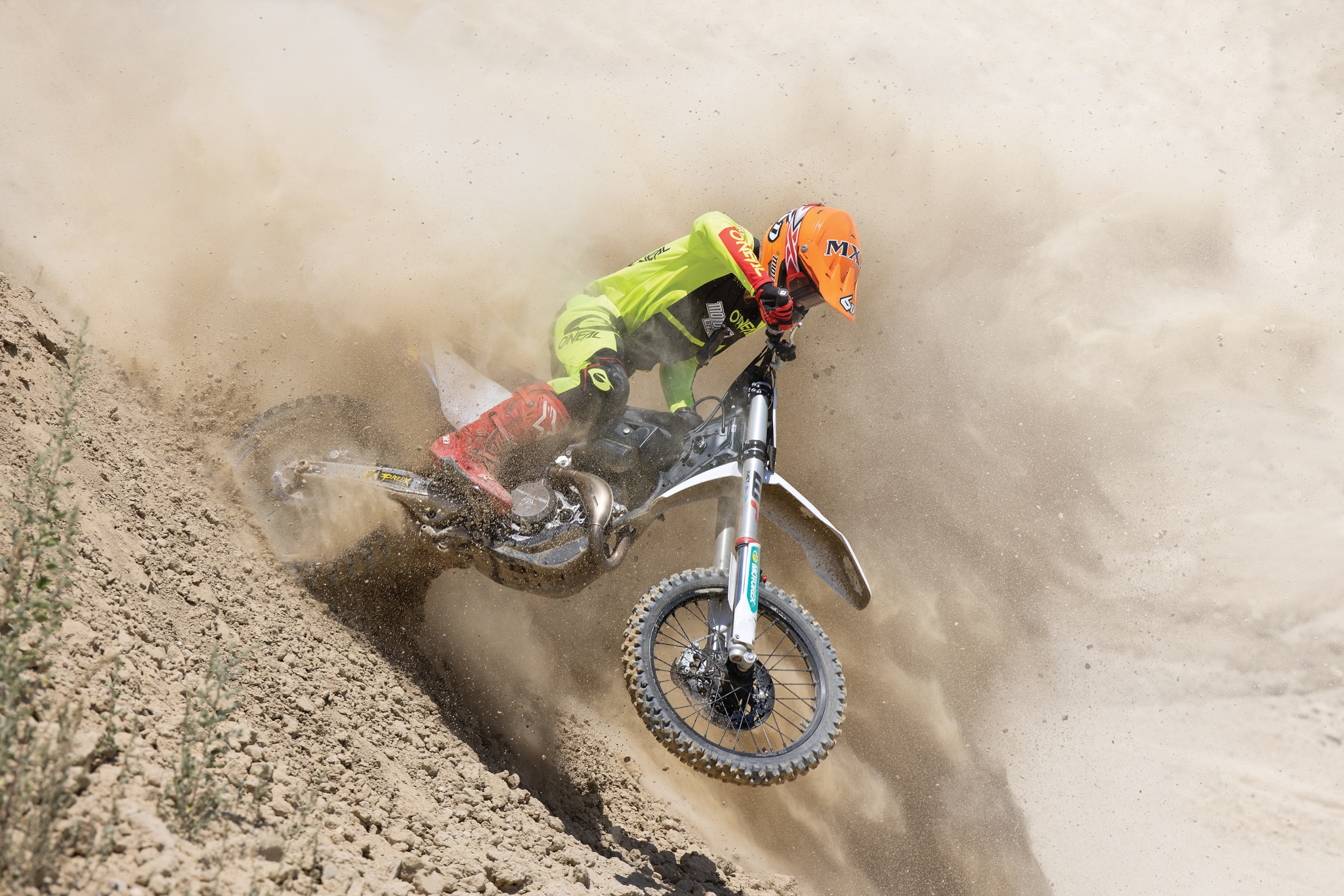
By Josh Mosiman
There are pop-up brands in every industry that pledge to solve all your problems with one simple fix. To the trained eye, they are easy to spot. You won’t recognize their company name or logo, and the product they’re pitching is too good to be true. I figured that was going to be the case when I first met the guys from Rev X Oil and they explained how a $20 oil additive would increase horsepower and lower engine temperatures so much so that I could suffer a catastrophic cooling-system failure and still finish the moto. Personally, I didn’t have any experience with oil additives before this adventure. I’m not an engine builder, but in the 27 years I’ve lived on this earth and the 21 years I’ve been racing motocross, I’ve never seen or heard of my friends putting an oil additive in their bikes. It’s just not a regular thing to do in our sport. Of course, the older MXA test riders have seen stuff like this before. Jody Weisel ran BG in his 125 Super Combat, and Gary Jones ran Prolong Engine Treatment in his offroad race cars, but none of the younger test riders had ever heard of those products. There are no oil additives in the everyday lineup of chemicals that MXA uses to service and maintain our test fleet.
Before starting Rev X Oil, Dan Wilson was an engine builder with his own shop that specialized in building engines for motorcycle road racing, drag bikes and dirt bikes. When he branched into working on high-end V8 race cars, he took a position at a chemical company, but his desire to create better oil solutions surpassed the company’s desire to progress, meaning it was time to do it himself.
THE MAIN REASON WE STOPPED THE PRESSES AND SPENT A DAY WITH DAN WILSON AND HIS CREW WAS BECAUSE HE PROPOSED A WILD AND CRAZY IDEA TO US.
It’s not easy to track down the MXA wrecking crew. We have a long list of bikes and an endless supply of products to test. Plus, we are constantly racing throughout the year, and some of those events, like the AMA Nationals, take up a lot of time. The main reason we stopped the presses and spent a day with Dan Wilson and his crew was because he proposed a wild and crazy idea to us. He told us that he would fly from Michigan to California, buy a used 450 sight unseen, pour his Max Power Oil additive into the engine, remove the radiators, and let us try to blow up his now “air-cooled” Husqvarna FC450. Sounds fun, right? He had our full attention.
MXA test editor Dennis Stapleton paid full retail price for a 2023 Husqvarna FC450 Rockstar Edition to use in his motocross vacation rental fleet. It was the perfect candidate for this test, because there was no way Husqvarna would ever give us a bike to test again if we rode one of their Husqvarna test bikes without water, radiators or a water pump. But, no one could complain if we used a bike that Dennis paid full pop for and was willing to sell to Dan Wilson on the day of the Rev X test. Even better, there was no way that the bike could be tampered with by Dan beforehand because he saw it for the first time at Glen Helen.
Originally, before I learned how the Rev X additive worked, I had a grand plan to ride with the Rev X Max Power oil additive in the FC450 without the radiators for a while, and if it didn’t blow up, then I wanted to drain the oil, put conventional oil back in (without the additive) and try the same test again to see what would happen. Unfortunately, Dan explained that the Max Power chemicals would already be soaked into the metals of the engine and most of the benefits from the additive would stay in the engine, even after draining the oil. Of course, I was bummed, because that story would’ve ended with a bang—literally! Basically, once it’s in, the additive will remain active in the engine for multiple oil changes before it needs to be added again.

How does it work? Rev X Oil’s Max Power oil additive reduces friction in the engine, which lowers internal engine temperatures and increases power. The highly concentrated chemicals in Max Power are drawn to the hot spots and wear points within the engine, and through the heating and cooling process, the additive soaks into the pores of the metal and promotes smooth operation with less friction.
FOR THIS TEST, WE CHOSE ONE OF THE HOTTEST DAYS OF THE YEAR AT GLEN HELEN. IT WAS OVER 100 DEGREES AND PEAKED AT 106 DEGREES AT ONE POINT.
We didn’t come to test whether we could ride a modern four-stroke without water in it. That has been tested in races around the world daily by riders who boil the water with overly aggressive clutch use. Instead, we wanted to investigate if less friction would allow the engine to run smoother and quicker (i.e., more power). Less friction means less heat. I have experience running too much oil in a bike before. You can actually feel how much slower the engine runs and how hard it has to work to keep up its speed. Everyone has heard of the power benefits of running less oil, although it comes at such a serious risk that most don’t try it. The electric water pump has been one of the more talked-about power-producing crazes at the pro races lately. The HRC Honda team figured out how to remove the mechanical water-pump impeller in their CRF250s for Jett and Hunter Lawrence during the 2021 Pro Motocross season. Then, Star Racing Yamaha, BarX Suzuki and MCR Honda showed up to Anaheim 1 with electric water pumps in 2022, with Pro Circuit Kawasaki implementing their own version shortly after. Eliminating the water-pump impeller removes some drag off the engine by lessening rotating mass and allowing the bike to run cooler, all of which help produce power. Like the e-pump, the Rev X Oil Max Power treatment frees up the engine to do its best work.
For this test, we chose one of the hottest days of the year at Glen Helen. It was over 100 degrees and peaked at 106 degrees at one point. After riding the FC450 stock, we lined up at the start for some speed runs. Dan has drag racing experience, and with a CHP-certified radar gun, we got real-world data by clocking my speed down Glen Helen’s long-start-straight five times. In my five runs without the additive, I was very consistent with 51-, 51-, 51-, 51- and 53-mph top speeds.
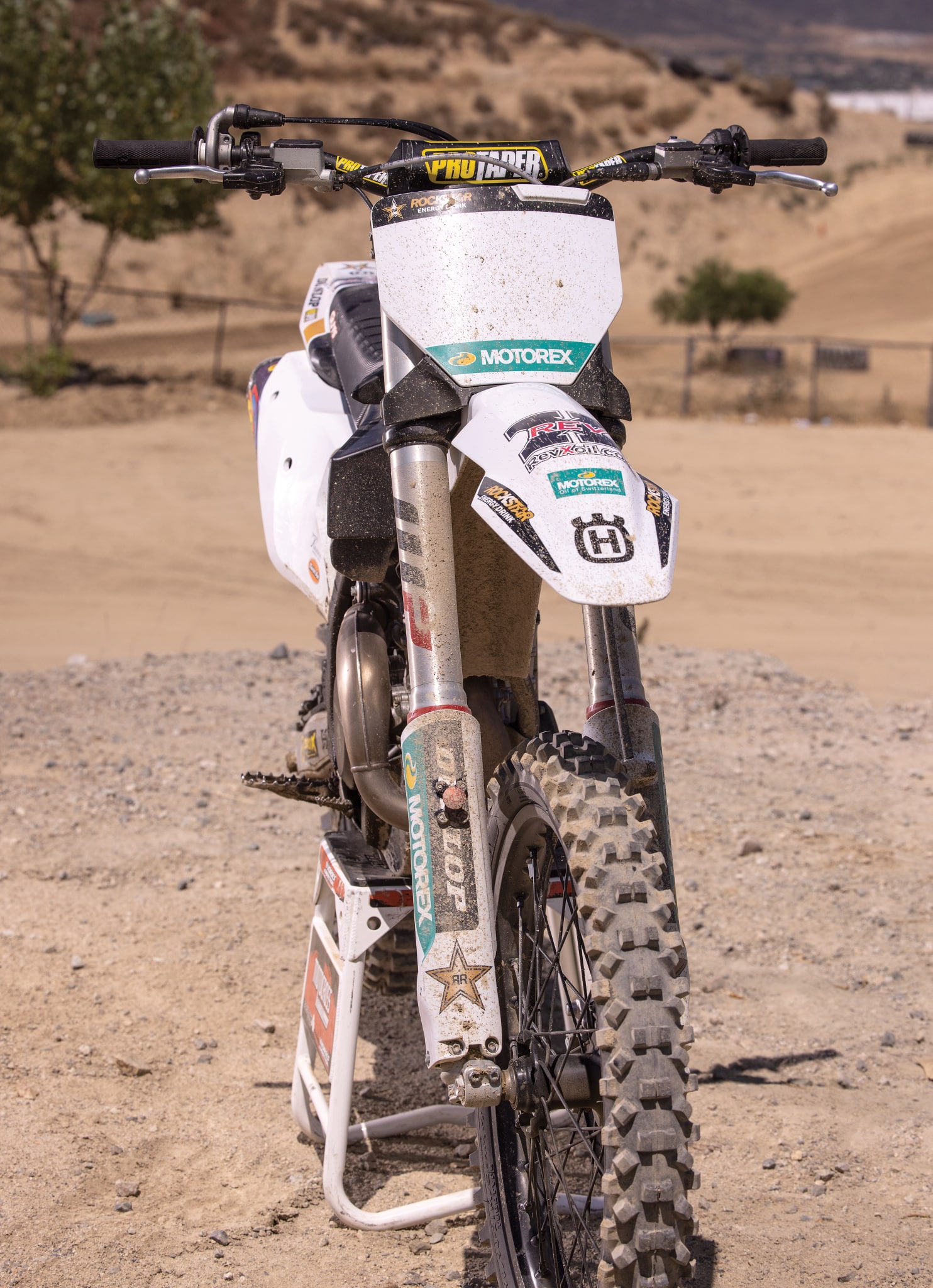
Then, we added the Max Power to the oil, rode for a few laps to get the engine hot, and let it sit for about 20 minutes to cool down (hard to do on a 100-degree day). Dan explained that the engine doesn’t have to cool down all the way, but as the oil cools down, it contracts, and all the pores in the metal close up. He explained that the metal squeezes the oil out of the pores during cool-down, but when it warms again, the pores open, and Max Power enters the pores.
In the initial two laps, I couldn’t tell a difference, but after the bike cooled down and oil was able to soak in, it was immediately noticeable on the track. It felt like we added a tooth on the rear sprocket and drilled holes in the airbox cover. The bike wasn’t drastically different, but it was livelier and more responsive on the low end. After getting comfortable on the bike, we went back to doing starts for the radar gun. My speed on these five passes was 54, 54, 54, 54.5 and 55 mph. Honestly, I was impressed with the added power, but I was antsy to get started on the no-radiator, no-water, no-water-pump riding. That’s what I really came for!
It wasn’t easy to remove hot radiators from a hot bike on a hot day at the track, but we did it. I couldn’t believe after paying $8,000 cash for the FC450 that Dan would let us ride it in the dirt without radiators, without shrouds and without a water pump. Remember what I said earlier about snake-oil salesmen? This stunt from the Rev X Oil guys earned my respect. He literally put his money where his mouth was, and it made for a fun story.
It was 3 o’clock in the afternoon on a hot Thursday at Glen Helen, so there weren’t many riders left on the track at this point, but everyone who was there came out to the edge of the track to see the idiot ride his bike without radiators. It was awkward to stick my leg out in corners, and the bike felt crazy light on the front end.
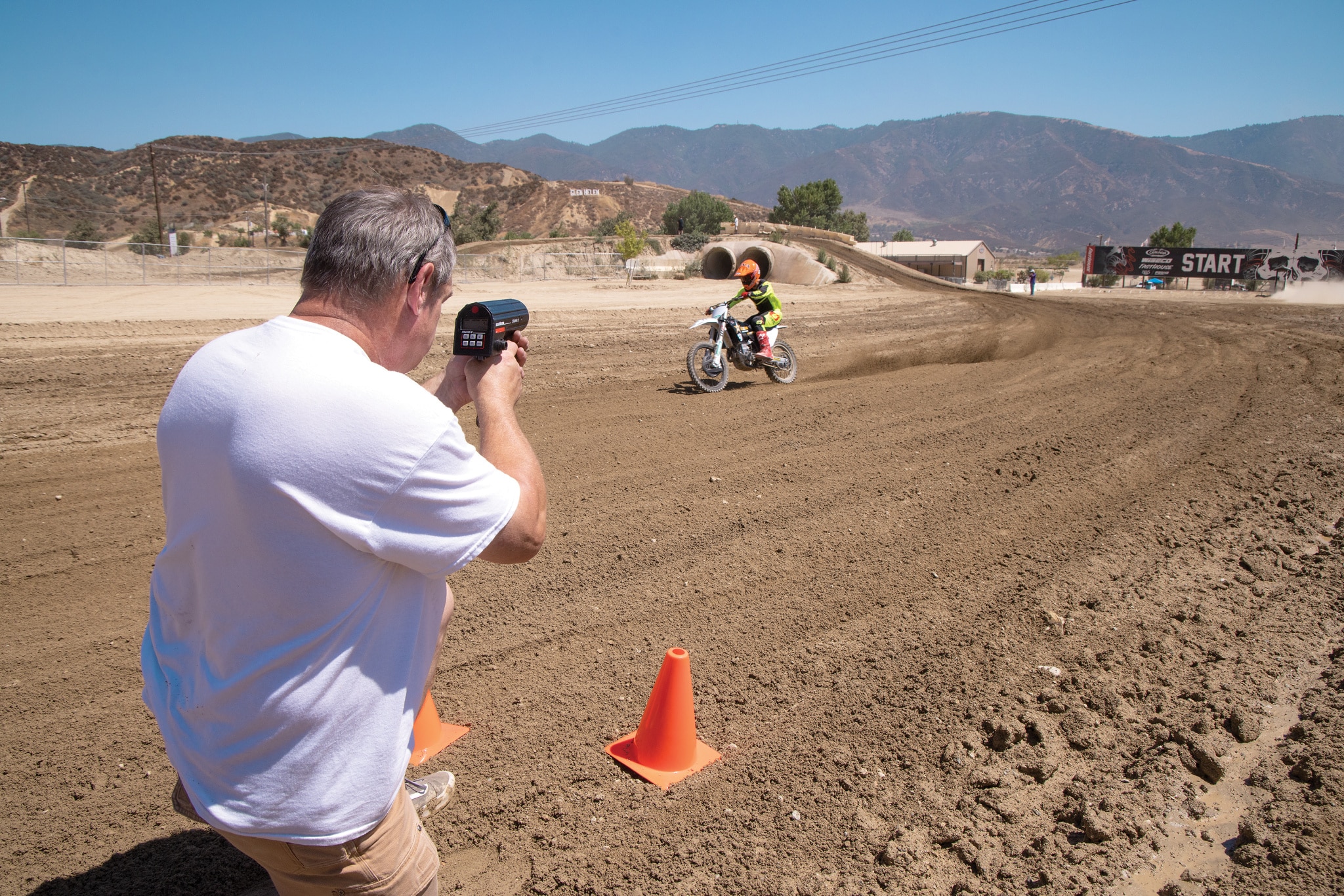
I was timid on the jumps at first (just in case it was going to die on the lip), but I did hit the finish line every time, and I had all the other MXA test riders wincing as I did it. Towards the end of my 20-minute moto, the clutch started to fade. The FC450 survived on Glen Helen’s National track before it shut off when I pulled off the track. It was certainly hot running without radiators on a 100-plus-degree day, but it fired back up and made it to the pits.
Then, as a bonus test, Mark Tilley from our sister publication, Dirt Bike Magazine, took the bike, still without the radiators or water, and rode it on Glen Helen’s off-road trails in the hills for an hour to find out how much abuse it could take. It eventually overheated and stalled again, but it wasn’t blown up. It restarted.
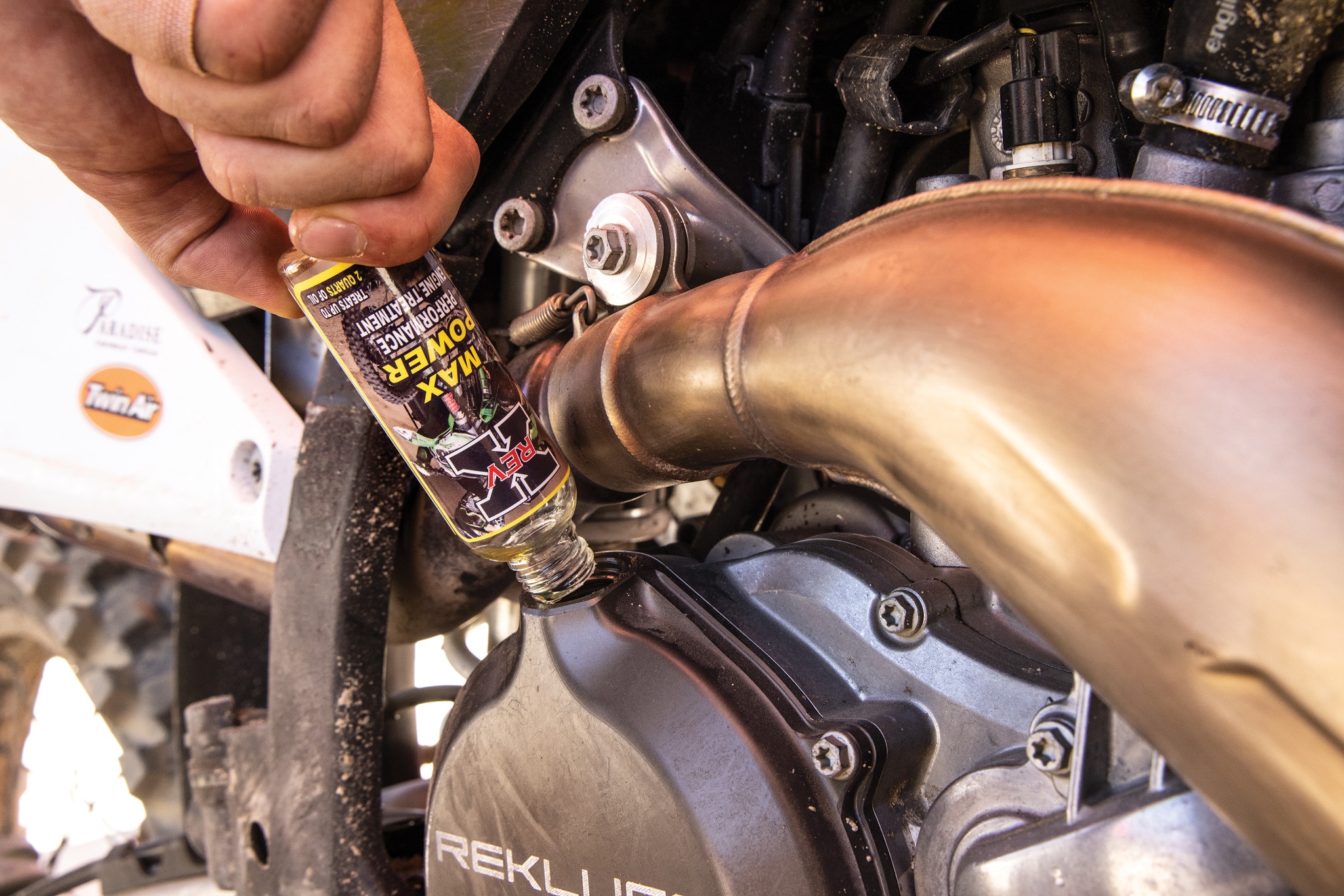
We had to give Dan Williams credit. He was smart enough to tear the FC450 engine down in the morning before we started to get before and after photos of the cylinder, crankshaft, cam sprocket, intake and exhaust rocker arms, and roller bearings. Then, after the test, he took the bike back home to Michigan and tore the whole engine apart, inspecting everything and documenting the results with a full-breakdown YouTube video at the Rev X Oil shop, showing all the parts were still well within spec and able to keep his new FC450 going. Then, he took it for a ride. After all, he owned it.
I COULDN’T BELIEVE AFTER PAYING $8,000 CASH FOR THE FC450 THAT DAN WOULD LET US RIDE IT IN THE DIRT WITHOUT RADIATORS, WITHOUT SHROUDS AND WITHOUT A WATER PUMP.
Overall, I was impressed. Dan gave us a fun experience that raised some serious questions and garnered lots of attention. Of course, we don’t recommend anyone trying this on their own bike. Dan’s goal wasn’t for riders to remove their radiators and go racing; it was to show that if you do lose coolant mid-race, the added protection of Max Power will allow you to finish the moto. AMA privateer Jase Kessler had a radiator hose rip off his 2023 Yamaha YZ450F mid-race at the 2023 Thunder Valley National, and he finished the moto without coolant while using Max Power. Everything in his engine was fine except the stator started to melt after racing for 15 minutes at high altitude without coolant.
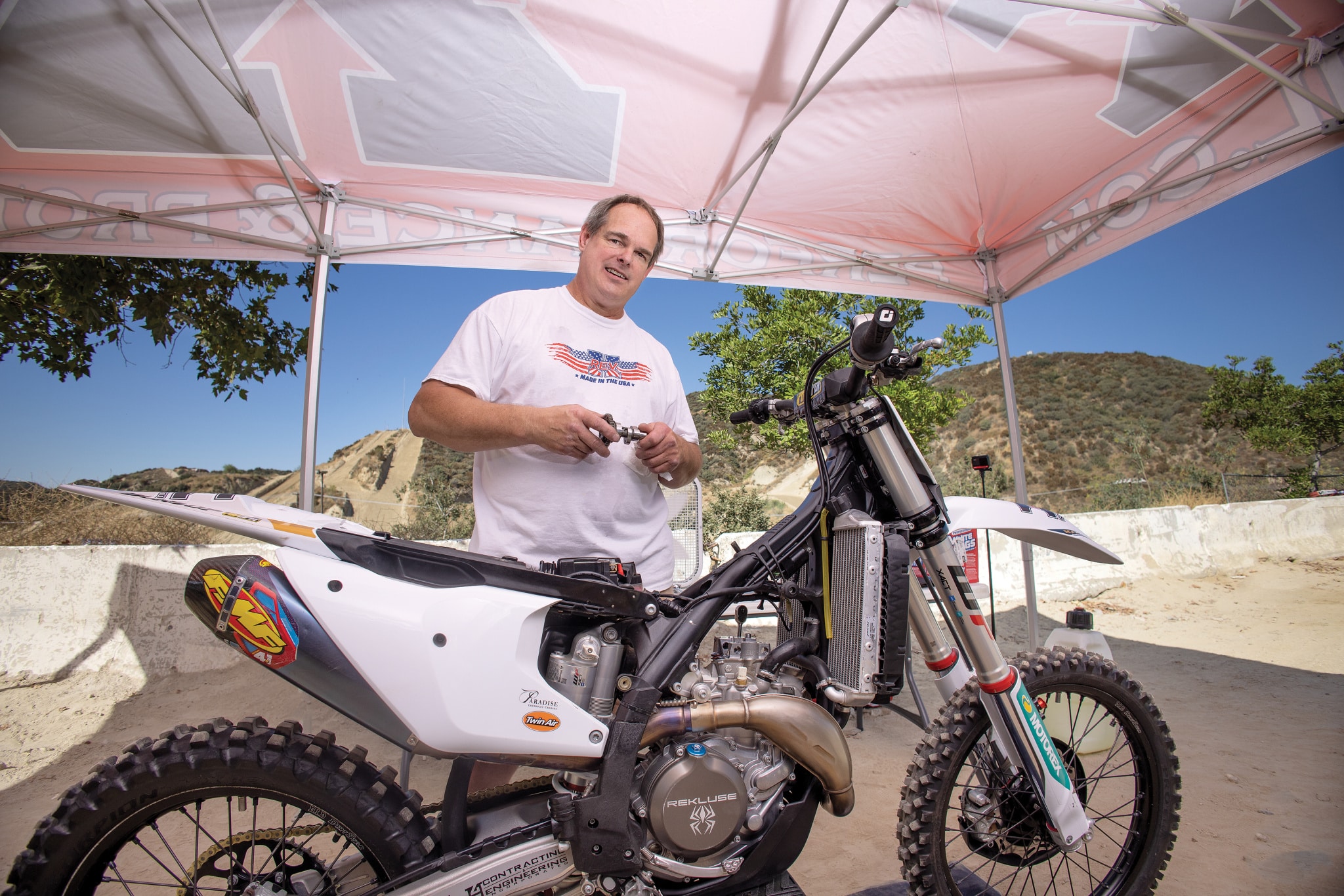
Dan wanted to show that his $20 oil additive is an affordable way to boost power, as well as increase reliability. We have more plans for testing the Rev X Oil Max Power oil additive in more bikes. Once we get through shootout season (testing bikes in their stock form), we’ll be able to document more long-term test results and dyno numbers (in a bike that still has radiators).


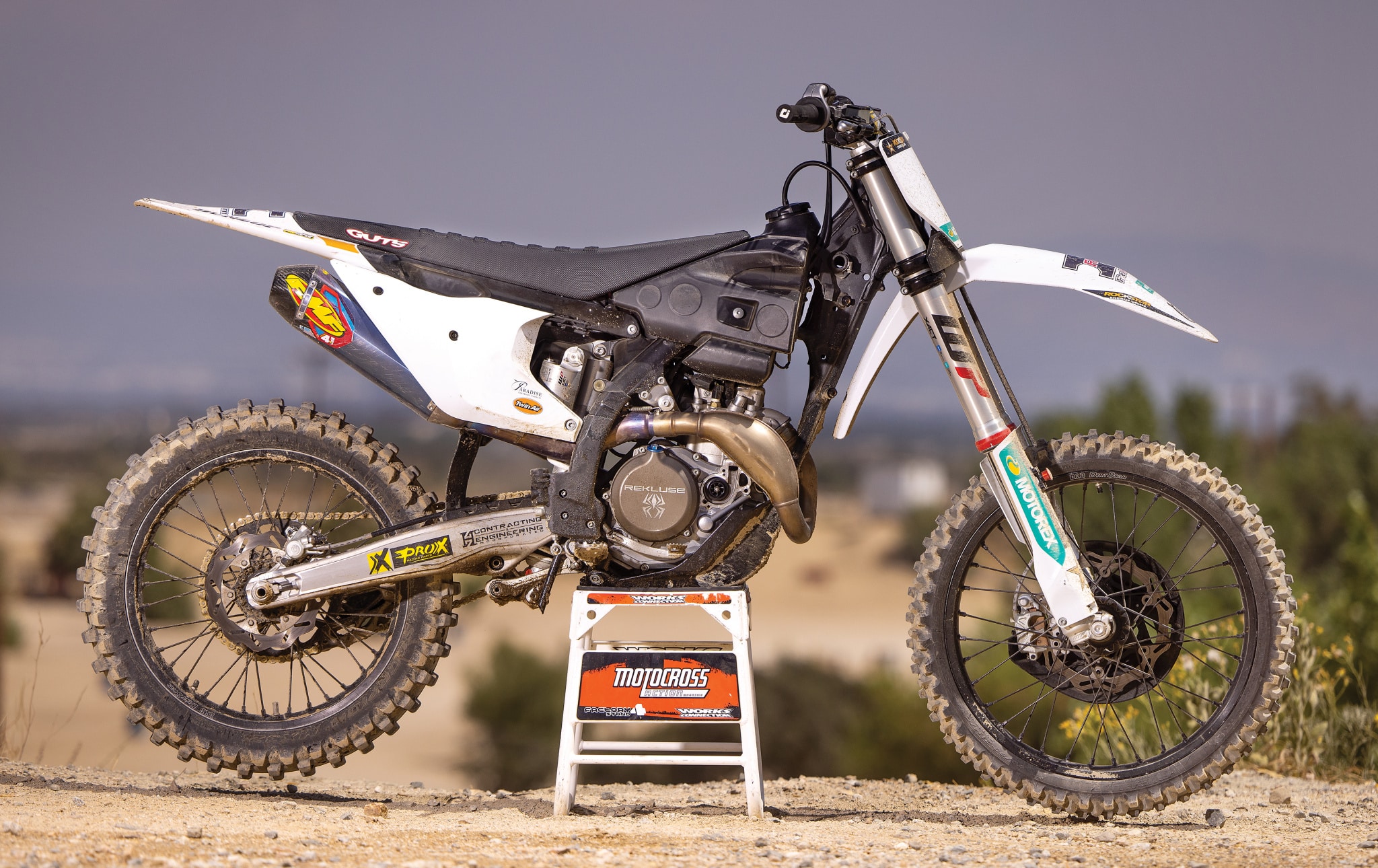




Comments are closed.